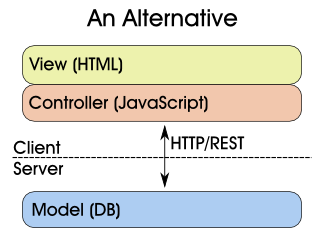It’s interesting to see the first signs of rebellion against RSpec. I jumped on the RSpec bandwagon when it first appeared, mostly so I wouldn’t have to write “assert_equals” all the time. But while I liked and used RSpec, I don’t think it made my tests any better. If anything, they were a little bit worse. I found myself testing things that were not really relevant to the code I was writing, asserting obvious things like “a newly-created record should be empty.”
When I got interested in Clojure, one of the first things I wrote was a testing library called “test-is”. I borrowed from a lot of Common Lisp testing frameworks, especially the idea of a generic assertion macro called “is”. It looks like this:
(deftest test-my-function
(is (= 7 (my-function 3 4)))
(is (even? (my-function 10 2))))
This is pretty basic, but it’s sufficient for low-level unit testing. So far, I think that’s how the library has been typically used. There have been occasional requests, however, for RSpec-style syntax. I can see how this would be useful for testing at a level higher than individual functions, but I have come to believe that the added semantics of RSpec are not really necessary.
Right now, the test-is library is built on the same abstractions as Clojure itself. Tests are functions, so you can apply all the same tools that already exist for handling functions. Tests can be called by name, organized into namespaces, and composed. There is almost no extra bookkeeping code that I need to write to make all of this work.
In contrast, if I were to adopt the RSpec style, I would have to write code to call, store, and organize tests. That’s more work for me, and ultimately restricts the flexibility of the library for people who use it. Furthermore, RSpec has its own set of semantics, above and beyond the language itself, which must be learned.
This is my first experience supporting a library for anyone other than myself, and I don’t want to force anyone into a particular style. A library like RSpec is a complete environment that attempts to anticipate all possible usage scenarios, so it’s grown correspondingly complicated. I want to provide a set of small tools, that can be combined with other tools to do interesting things.
Of course, by making that decision I’m already dictating, to some extent, how the library can be used. But really, what I’m trying to do is set limits for myself. I will commit to providing a flexible, extensible set of functions and macros for writing tests. I am explicitly not trying to provide a complete testing framework. If someone wants to build an RSpec-style framework on top of test-is, more power to them. I will happily try to make test-is easier to integrate into that framework.
But there’s one other thing that struck me about that article that I linked to at the beginning — the idea of putting tests and code in the same file. I think that’s a great idea, and Clojure comes ready-made to implement it. Clojure supports the idea of “metadata” on definitions. You can attach a set of arbitrary properties to any object, without affecting the value of that object.
It’s easy to attach a test function as metadata on a definition in Clojure, but the syntax is a little ugly, and there is no easy way to remove the tests from production code. So I came up with in addition to my library, the “with-test” macro. It lets you wrap any definition in a set of tests. It looks like this:
(with-test
(defn add-numbers [a b]
(+ a b))
(is (= 7 (add-numbers 3 4)))
(is (= -4 (add-numbers -6 2))))
This is equivalent to adding metadata to the function, but the syntax is a little cleaner. I’ve also added a global variable, “*load-tests*”, which can be set to false to omit tests when loading production code.
I like having each function right next to its tests. It makes it easier to remember to write tests, and easier to see how the function is supposed to behave. So to the extent that test-is will promote a testing style, this is it. But it’s a pretty radical departure from the traditional style of testing, so I’m not sure how others will react to it.


